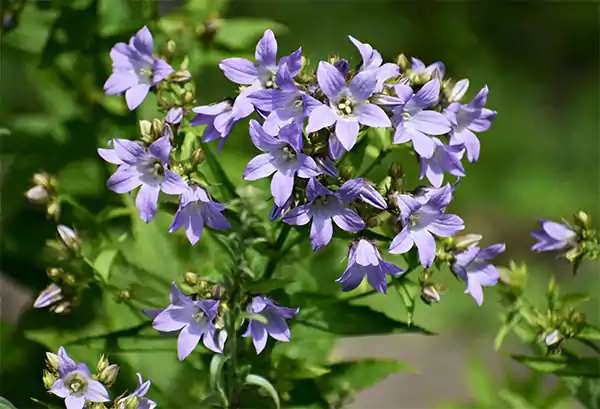
I still remember the first time I planted a Campanula in my garden, and since then, I have been fascinated by its timeless beauty. The gentle bells of the genus swaying in the breeze look absolutely soothing. Commonly known as the bellflower or purple plant, it is one of the best flowering plants. This alluring species is originally from the Northern Hemisphere, widely grown in the Mediterranean and Caucasus regions.
Moving further, jump into this immersive guide with me and explore the enchanting world of Campanulas. Let us quickly understand its features, benefits, and taxonomic background, along with the ultimate care guide that you need to follow to witness flourishing blooms.
Campanula: Introduction to the Impressive Bell Flower
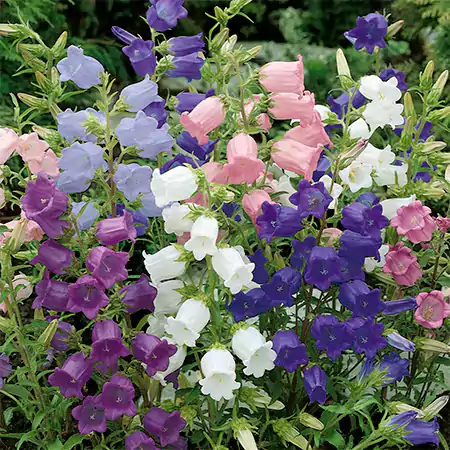
Whenever I come across the delicate Campanula flower, also known as the bellflower, I see why these are so highly valued by gardening enthusiasts. As has been mentioned earlier, its bell-shaped blooms make it an eye-catching element in any garden space. If you are looking for smart ways to elevate your home decor with a houseplant, adding these to your living space will be an excellent option.
Moving further, my fondness for the genus encouraged me to explore more about it. Given below are some astonishing features and benefits of these exquisite flowers.
- I love that Campanulas come in shades of blue, purple, pink, and white, adding a soft yet vibrant touch to my balcony garden.
- Their bell-shaped blossoms bring in a charming atmosphere. Being absolutely enchanting, they symbolize gratitude and everlasting love.
- With almost little to no specific care demands, the flower thrives in full sunlight and in a variety of soil types, which makes it easy for me to grow them.
- Its long blooming period, from late spring to early autumn, keeps my balcony garden colorful for months.
- The most fascinating part that I enjoy about growing this beauty is that it is pollinator-friendly. It attracts bees, hummingbirds, and butterflies, making my garden visually appealing, especially during spring.
- I often use these species as a natural border plant to give my garden a soft and romantic touch. Its vibrant blooms also add a pop of color to my front lawn, making it aesthetically pleasing.
In my experience, Campanula is more than just a flower. Not only is it historically and culturally rich, but it also symbolizes different sentiments across various traditions. Whenever I see its gentle bell-like blooms sway, I feel so calm and peaceful.
Different Varieties of Campanula Flowers
Allow me to quickly walk you through my diverse collection of Campanula flowers. Each genus has its own uniqueness and enhances the vibe of my garden in its own sense.
| Flower Name | Image | Key Points |
| Tussock Bellflower |  |
|
| Fairy Thimbles (also known as purple Campanula) | 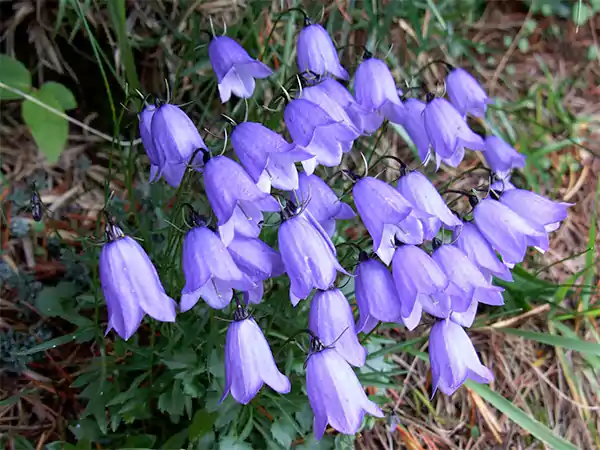 |
|
| Serbian Bellflower |  |
|
| Dalmatian Bellflower | 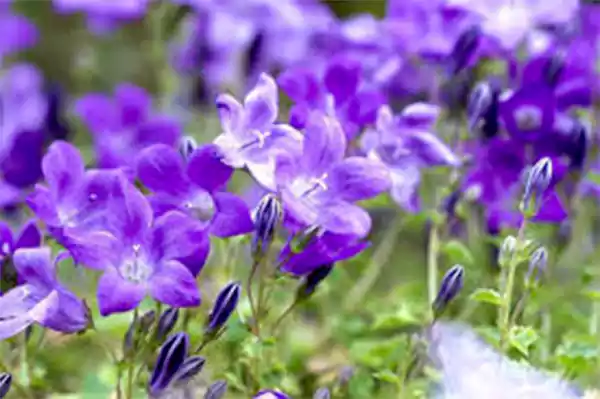 |
|
| Peach-Leafed Bluebell | 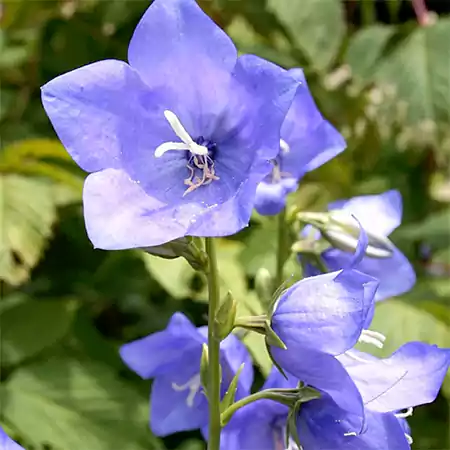 |
|
| Canterbury Bell (also known as Campanula Pink Bell Flower) | 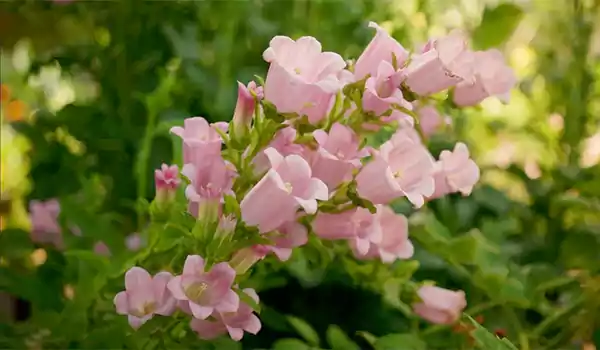 |
|
| Campanula Birch Hybrid (Also known as the Majestic Purple Campanula) | 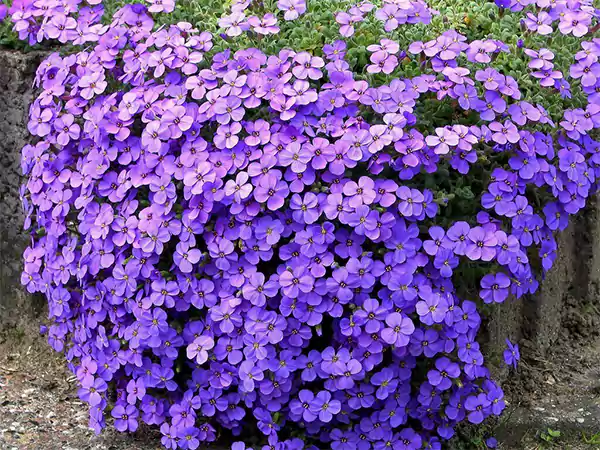 |
|
| White Bell Flower Campanula | 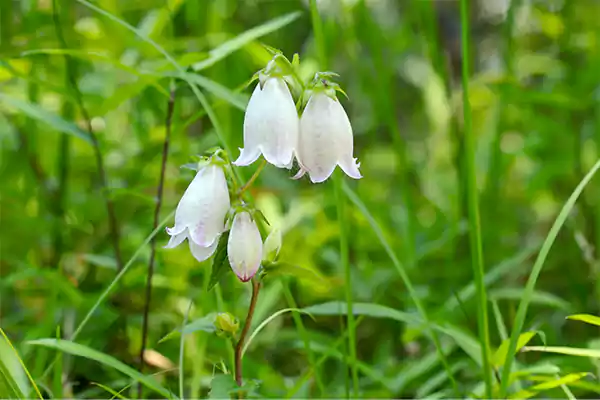 |
|
| Rampion Bellflower | 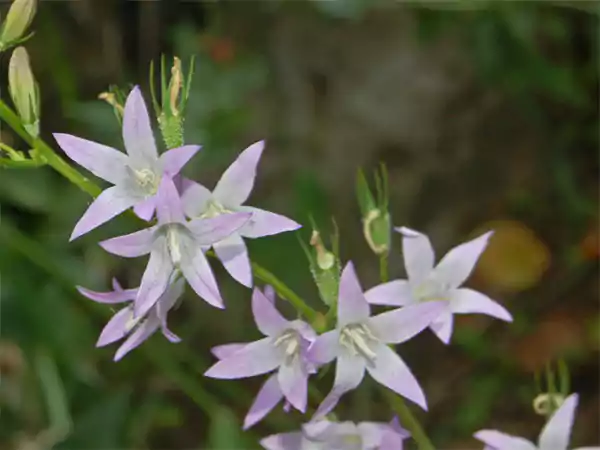 |
|
| Spotted Bellflower | 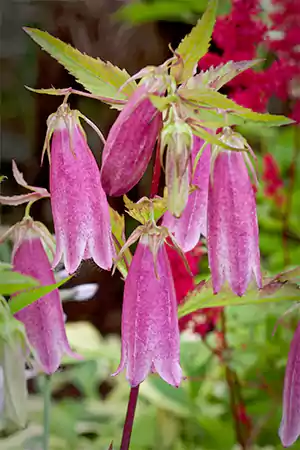 |
|
Quite impressive, huh? Exploring the different varieties of this genus always feels like a treasure hunt. Each one has its own charm — some are elegant, some are wide, while some are just rare flowers with explicit beauty.
Scientific Classification of Campanula Flowers

If you are a garden enthusiast or a seasoned botanist, you might be curious to explore more about the plant family of the Campanula flowers. Given below is an elaborate scientific classification of the genus for your ease.
| Taxonomic Background of Campanula | |
| Kingdom | Plantae |
| Clade | Tracheophytes |
| Clade | Angiosperms |
| Clade | Eudicots |
| Clade | Asterids |
| Order | Asterales |
| Family | Campanulaceae |
| Subfamily | Campanuloideae |
| Genus | Campanula |
The genus consists of more than 500 species and subspecies. It includes annuals, biennials, and perennials spread across the temperate and subtropical regions of the Northern Hemisphere.
An Elaborative Campanula Care Guide For You

Just like me, if you are also planning to bring this alluring plant home, it is better to understand its care guide. Though the species does not need much attention, it is necessary to provide basic growing conditions so that the flower can flourish.
- Sunlight Exposure: Campanulas should ideally be planted in areas where they can receive an ample amount of sunlight. It can also thrive in partial shade, but a minimum of 4–6 hours of direct sun exposure is necessary.
- Water Requirement: Frequent watering is needed during the initial growing stages. Once the Campanula flower is fully established, it requires water only to keep the soil moist. Avoid overwatering to prevent root rot.
- Soil Type: Prefers growing in well-draining loamy soil. Though these blooms can tolerate a variety of soil conditions, make sure it is not soggy and should be evenly moist.
- Fertilizer: Apply a general-purpose, well-balanced fertilizer every two weeks during summer to avoid pest infestation. To maintain the overall health of the plant, make sure to add organic compost to the soil.
Planning to grow this alluring species in a pot? Be sure to grow the dwarf varieties to complement other flowers in your garden space. While potting or repotting, make sure to use a container with proper drainage holes. Place the plant in an area where it can get abundant sunlight, and after 2–3 weeks, plant it in its final position.
Pruning and Propagation of Campanula Bell Flower
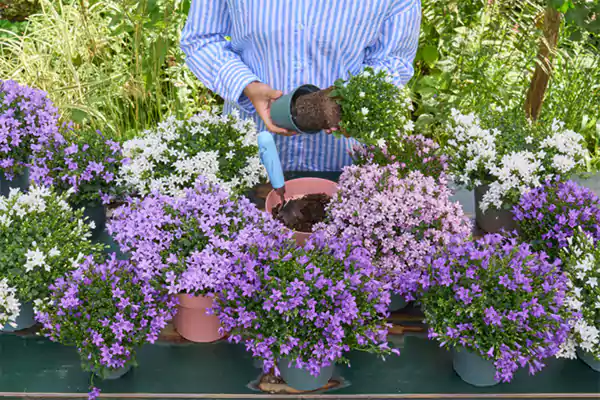
Although Campanula is said to be a low-maintenance bellflower, it does require little pruning for optimal growth. Each cultivar varies in the care it needs, but below I have listed the most common method to prune this genus.
- Use a sharp knife to cut down any dead or unwanted parts.
- If you wish to remove any damaged stems, be sure to cut at least 2–3 inches above the root.
- Consider removing individual flowers or spent blooms to promote new growth of the genus.
- Bellflowers generally do not require pruning. They tend to stay green and healthy through many seasons. Whether it needs to be pruned or not entirely depends on the quality of the fertilizer you use. Furthermore, if you are planning to propagate your blue Campanula plant, it is ideal to do so using the stem cutting procedure.
- Use a clean and sharp pair of snips. Chop off 3–4 inches of the new shoot that usually emerges during spring.
- Prepare a potting mix using a permeable soil type. Do not forget to add essential growth nutrients for the new sapling.
- Bury the cut end of the flower around two inches into the soil. Slightly moisten the soil and cover it with a plastic bag to lock in the moisture for a few days.
Once you see the roots forming, repot it into a big container and place it in its final position. Do not change its spot for at least a year, or until the plant is fully grown.
Conclusion
To sum up, one can say that Campanula is an ornamental plant and the most widely cultivated bellflower in the northern temperate regions and tropical mountains. Some species of this bloom are valued for their long-lasting flowers, while others are simply appreciated for their vibrancy.
I personally love how it instantly enhances the whole vibe of my garden space. The different hues of the genus can transform any dull corner into a sight to behold.
Does Campanula come back every year?
Yes, Campanulas come back every year since they are perennial species. While some cultivars are annuals and biennials, most of them grow back every year.
Where is the best place to plant Campanula?
The best place to plant this blue flower is in well-fertilized soil, under bright sunlight. With moderate watering, they can grow effortlessly.
Do Campanulas like sun or shade?
Campanulas generally prefer growing in sunlight. They require a minimum of 4–6 hours of direct exposure, but they can also thrive in areas with partial shade.
Is Campanula invasive?
Yes, some cultivars of the Campanula bellflowers are invasive in nature. The creeping varieties of the genus can be extremely damaging to home gardens and should be cultivated in forests only.
Do Campanulas spread?
Yes, some species, like Campanula rapunculoides, can spread widely. These can easily take over the yard and deplete other plants of essential nutrients.
- Campanula – ScienceDirect
- Bellflower – Britannica
